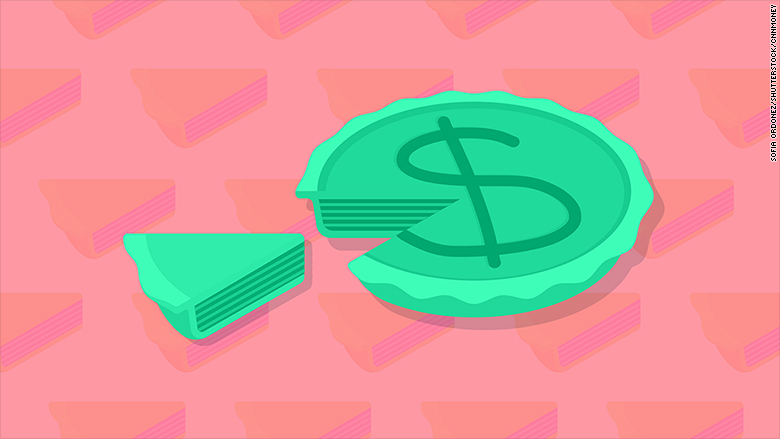
Just because most Americans say they keep a household budget, doesn't mean they do it well.
About 20% of people budget "in their heads," according to a study by Bankrate. That may be why a majority of Americans don't have enough savings to cover an unexpected $1,000 expense.
Keeping a mental money tally may work for a precious few. But budgets, which personal finance experts say are best tracked on paper, a spreadsheet or one of the many budgeting apps available, are not one-size-fits-all.
The level of your career, where you live, how much debt you owe and the time you have to track your spending day-to-day can all point to which budget will set you up best for success.
Whether you're a beginning budgeter or an experienced money tracker looking for a better fit, there is a budget for you.
Here are six common budgets, how they work and who they fit best.
50/30/20 Budget
How it works: The method is simple: 50% of your take-home pay goes to needs, 30% to wants and 20% goes to debt and savings.
The hard part for some beginners, says Tyler Dolan, a certified financial planner who helps people manage their financial lives at Society of Grownups, is determining a "need" from a "want."
The 50% to cover essentials should include housing, food, utilities and transportation. The 30% is for obvious extras like dinners out, new shoes and travel, but also your cell phone plan, cable and subscription plans.
The 20% for debt payment and savings is your "get ahead" bucket.
Best fit for: First-time budgeters and young people with straightforward expenses.
Get started: Use this Google template to begin.
Top-Down Budget
How it works: You are the CEO of "You Inc.," setting the percentages of your take-home pay devoted to the priorities you choose. The categories are more specific than the 50/30/20 budget like: groceries, clothing, internet, gas, dinners out.
But you are still focused on big ideas like wanting to retire with 85% of your income at 60 or attending 13 weddings this summer. With a top-down budget you'll be able to arrange your spending and saving to reach the goal.
Best fit for: Big-picture people and those with specific saving goals.
Get started: Use an app like Level Money to create categories for spending.
Bottom-Up Budget
How it works: Rather than beginning at the top with a big picture goal, you start at the bottom with the actual costs of your daily expenses.
Bottom-up is the way to go for people who are already locked into some pretty big expenses, like a mortgage, fixed transportation costs or costs associated with having children including diapers and child care.
Those expenses will be more difficult to change than curbing how many margaritas you're grabbing with friends. A bottom-up budget includes those costs from the beginning and shows you what you have remaining. From there you can work to curb expenses or set savings goals.
Best fit for: People with existing hefty fixed expenses and those looking to better understand their spending.
Get started: Use Mint, the Personal Capital app or this personal-budget template on Google to track your expenses.
Zero-Sum Budget
How it works: Give each dollar a job. Pay yourself first by allocating the first dollars to your debts or your savings goals. Then place each dollar of your monthly income into an allotted space so that you're left with zero (or maybe a bit of checking account surplus).
By basing next month's budget on last month's expenses and income you'll have a real-time picture of your spending and expenses.
But be warned: "This is a very hands-on budget," says Dolan. It is good for people who want to track metrics.
Best fit for: Detail-oriented people and those with high fixed expenses or who have a hard time controlling their spending.
Get started: Use an app like You Need a Budget (YNAB) to give every dollar a job.
Reverse budget
How it works: Like a zero-sum budget, you pay yourself first. But rather than focus on categories, you identify specific savings goals.
Once you've set aside savings, the rest of the money trickles down to cover basics like housing and food and all the extras, which might vary from month-to-month and are less rigid than in the zero-sum. The focus is mostly on the savings.
If you're still counting pennies each month, work up to this one. This budget works best for people who have some financial cushion and want to push themselves to reach specific saving goals.
Best fit for: The budget-savvy and those with a specific financial goals.
Get started: Use an app like Qapital to set goals and reach them.
Envelope budget
How it works: Set aside an envelope for each of your spending categories every month -- gas, groceries, utilities, rent. Once you've spent what is in the envelope, you're done.
It works best for people who are paid in cash, but can be adapted to digital envelopes or accounts.
Also, it's a grounding budget to come back to when you need to reign in spending. Use it as an add-on to other budgets in categories where your spending runs wild. You may want to have an envelope just for "going out" or "groceries."
Best fit for: Those with cash, visual people and those who need to curb their spending.
Get started: Use an app like Goodbudget or some sturdy envelopes.
